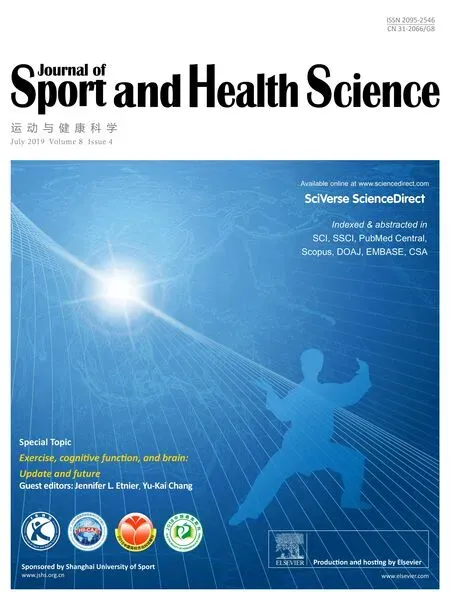Editorial re:Could sport be part.....by Ring-Dimitriou et al.
Childhood obesity has become a concern in most economically developing countries.The reasons for this seem clear:too much food and not enough movement. This dilemma has received much scientific attention,and the question arises:How do we get children to move and make good eating choices? In their opinion piece in this issue of theJournal of Sport and Health Science(JSHS), Ring-Dimitriou et al.1make an argument that playing structured and supervised traditional sports will help children with obesity,where traditional sports include football,handball,gymnastics,athletics,and martial arts.
Khan et al.,2in a widely citedThe Lancetpaper,argue what seems obvious: that sport and physical activity may contribute to the overall health of nations. In a previous issue ofJSHS,Castagna et al.3make an appeal to the value of team sports,reminding us how much fun it was to play soccer, basketball,handball, and rugby when we were children.JSHShas even devoted a special topic of traditional sports and their impact on physical well-being.4-9However,questions remain.For example, why, during the time we were growing up (in my case>50 years ago),were there so few children with obesity?Why were sport and exercise and games so much fun then,and why did they occupy so much of our spare time?Why,for many of today’s children,does moving and playing team sports and running around in parks and forests seem such a chore?
Of course, the world today is different from what it was 50 years ago,and children grow up in different circumstances now compared with then. But what are the conceptual differences between now and then?What did I have as a 5-or 8-or 12-year-old boy that children now typically do not have anymore?There are several answers.
Opportunity—When I stepped outside my home, I had access to a hilly grass field,a playground,a park,a huge forest,and a soccer and team handball field within minutes of walking. In the winter, the grassy hill became my downhill skiing slope,the handball field my skating rink.During summer vacation, when we were allowed to stay out until dark, the street became a volleyball court, a soccer pitch, or a place to play hide and seek with kids ranging from 3 to 15, boys and girls.Everybody was outside; being inside was boring, and parents did not want their children inside, definitely not on a warm,sunny, summer afternoon or early evening. The playground started right outside the house.
Security—Back then,nobody had to be concerned about their children’s safety. We were safe outside, everywhere, anytime.No parent would ever come and supervise,control,or otherwise check on us or interfere with our playing.We looked after each other;the 5-year-old was taken care of by older siblings or older neighborhood children.Yes,we were dirty from roaming in the forest,playing in the mud,running around in the rain,and hiding inside dog houses and pig sties; and, yes, we fell and bled and came home with scratches and bruises,but the environment was safe;no adult supervision was ever required.
Unsupervised play—We organized games,invented games,made up the rules, decided where to play, when to play, and what to play.We decided when to rest and share an ice cream and when to just lie in the shade of a tree after an afternoon’s worth of playing football.Being outside was escape from your parents,being free,not being recruited to wash the dishes,cut the grass,milk the cows,help with chores.
... And, we had no idea what calories were. We ate what we were given, and desserts were reserved for Sunday lunch.Almost nobody became obese.We had too much fun playing;there was no time to contemplate food beyond the meals we were served.
The questions remain: How, in today’s world, can we restore free, safe play, organized by kids for kids? How, in today’s world, with all its distractions, can we make playing sports and games and being outside as attractive as it was for us back then? Supervised, organized sports controlled by parents,coaches,teachers,and adults:I am afraid that will not be the solution.
 Journal of Sport and Health Science2019年4期
Journal of Sport and Health Science2019年4期
- Journal of Sport and Health Science的其它文章
- Standardization of exercise intensity and consideration of a dose-response is essential.Commentary on“Exercise-linked FNDC5/irisin rescues synaptic plasticity and memory defects in Alzheimer’s models”,by Lourenco et al.,published 2019 in Nature Medicine
- Journal of Sport and Health Science Guide for Authors
- Could sport be part of pediatric obesity prevention and treatment?Expert conclusions from the 28th European Childhood Obesity Group Congress
- Exercise,cognitive function,and the brain:Advancing our understanding of complex relationships
- Associations between cardiorespiratory fitness,physical activity,intraindividual variability in behavior,and cingulate cortex in younger adults
- An overview of ischemic preconditioning in exercise performance:A systematic review
